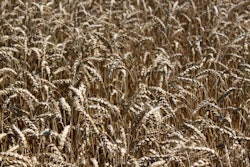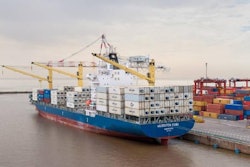
Construction is scheduled to start soon on the first cattle feed production facility using rice straw as a raw material in the Indian state of Punjab.
Set up by a private firm, the new plant will be set up on 20 acres at the village of Mehma Sarja near Bathinda in the south of the state of Punjab, which lies in northwestern India.
Cost of the plant is INR200 million (US$2.9 million), reports Tribune India.
This will be the first plant in the state to offer this environmentally friendly method for the disposal of rice straw, according to Pritam Singh Kotbhai, member of the legislative assembly for the local area. As well as offering employment opportunities for local people, the feed mill will reduce the traditional pollution-generating activity of burning the stubble co-product, offer a new source of income for local farmers, and increase the supply of feed for the state’s cattle population.
Punjab’s Finance Minister, Manpreet Badal, was invited to lay the foundation stone for the new plant.
This year, chairman of India’s leading feed association, the Compound Livestock Feed Manufacturers' Association (CLFMA), led the call for such innovations as the paddy straw plant “at every step of the animal protein value chain to sustain growth and profitability of India’s livestock sector in future.”
“But at the outset, we must be concerned about who is going to feed us in the future and how to ensure food and nutritional security of the billion-plus population while remaining focused on sustainability of our unique and precious biological ecosystem,” CLFMA chairman B. Soundararjan told Rural Marketing.
India a large dairy player
At an event in May 2018, CLFMA Executive Director, Raghavan Sampathkumar, said that with more than 300 million bovine animals, India is one of the largest dairy players globally, and less than 20 percent of the population is committed to vegetarianism/veganism.
India’s total milk production increased from 17 million metric tons (mmt) in the early 1950s to 146.3 mmt in 2013-14, according to the national government’s Department of Animal Husbandry, Dairy and Fisheries (DAHD). Over the same period, daily per-capita milk availability grew from 130 grams to 322 grams.
DAHD says dairying has become an important source of income for millions of rural families, and that the activity provides employment and income particularly for smallholders and women farmers, whose milk production now accounts for most of total output through many village dairy cooperatives. These were set up by the Indian government in 2012 in the country’s 15 top dairy-producing states — including Punjab — under the National Dairy Plan. The Plan also covered genetic improvement of bovines, and raising biosecurity standards.
Official data from FAOstat, the statistics arm of the United Nations’ Food and Agriculture Organization, put India’s production of cows’ milk in 2016 at 77.4 mmt, compared with just under 60 mmt in 2012. Buffalo milk output in the country rose from 67.7 mmt to 78.0 mmt over the same time period.
Cattle feeds accounted for almost 23 percent of total global compound feed production in 2017, according to the latest World Feed Panorama 2018 from WATTAgNet. In India, a 15 percent increase in demand for commercial dairy feeds from the previous year is attributed to the shift to higher-yielding breeds.
Growth in the domestic dairy market was the driver behind the recent decision by KSE Ltd. of India to expand its production base for cattle feeds.

















